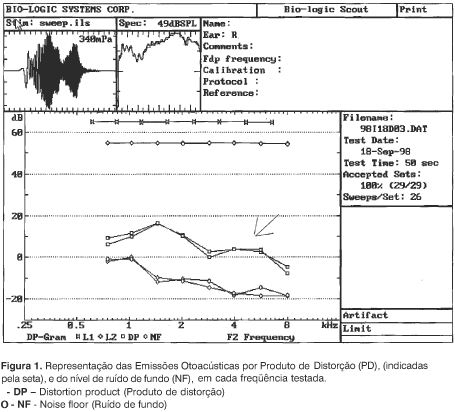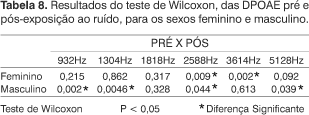Introduction: Noise-induced hearing loss is one of the most common causes for sensorineural hearing impairment. Objective: The purpose of this study was to evaluate pure tone and distortion product otoacoustic emissions (DPOAE) pre and post white noise exposition at high levels (100 dB SPL for 10 minutes), considering gender and ear variables, aiming at investigating pure tone audiometry and DPOAE efficiency in detecting subtle temporary threshold shifts (TTS). Study design: prospectivo clinical randomized. Material and method: Forty subjects, 20 male and 20 female ranging from 18 to 36 years old with no otological complaints were evaluated. Pure tone audiometry and DPOAE were carried out pre and post white noise exposure. Results: Pure tone audiometry was sensitive in detecting temporary threshold shifts after white noise exposition in 2, 3 and 4 kHz, with no significant differences concerning gender and ear, whereas DPOAE revealed temporary shifts in audibility evidenced by amplitude reduction, in 2588 and 3614 in female subjects and in 932, 1304, 2588 and 5128 Hz in male subjects. Conclusion: We could conclude that either pure tone audiometry or DPOAE were sensitive in determining significant temporary shifts in hearing thresholds and amplitude, respectively, after white noise exposition, according to the involved frequency range
hearing; otoacoustic emissions; noise; acoustic stimulation









